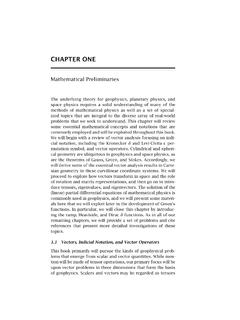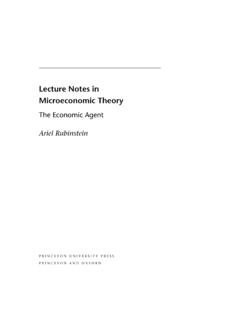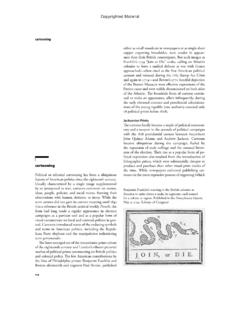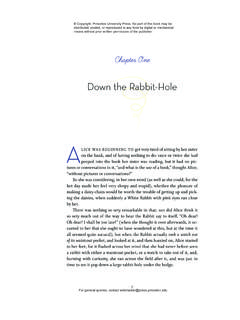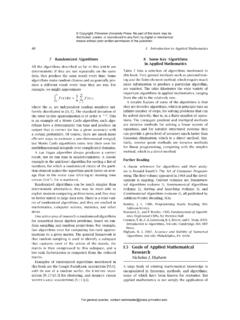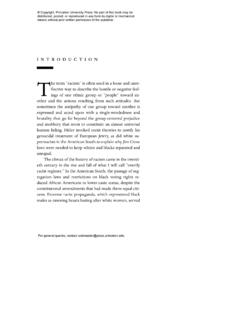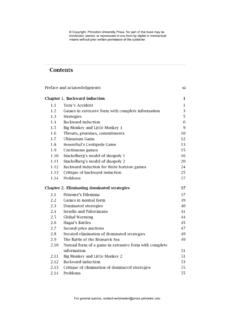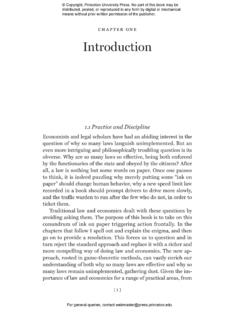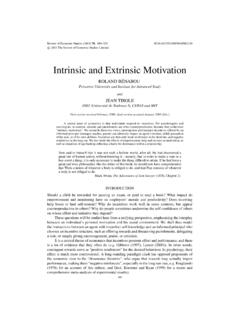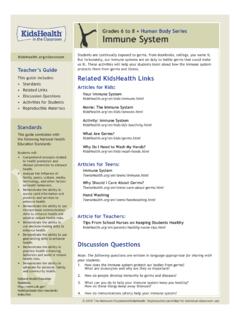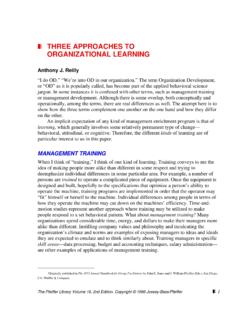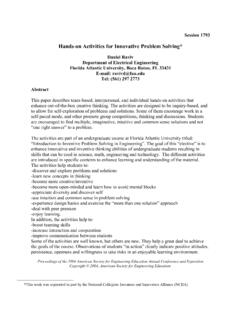Transcription of What Is Self-Organization? - Princeton University
1 1 What Is Self-Organization? Technological systems become organized by commandsfrom outside, as when human intentions lead to the buildingof structures or machines. But many natural systemsbecome structured by their own internal processes: these arethe self -organizing systems, and the emergence of orderwithin them is a complex phenomenon that intriguesscientists from all disciplines. F. E. Yates et al., self -Organizing Systems:The Emergence of OrderSelf-Organization DefinedSelf-organization refers to a broad range of pattern-formation processes inboth physical and biological systems, such as sand grains assembling intorippled dunes (Figure ), chemical reactants forming swirling spirals (Fig-ure ), cells making up highly structured tissues, and fish joining togetherin schools.
2 A basic feature of these diverse systems is the means by which theyacquire their order and structure. In self -organizing systems, pattern forma-tion occurs through interactions internal to the system, without intervention byexternal directing influences. Haken (1977, p. 191) illustrated this crucial dis-tinction with an example based on human activity: Consider, for example, agroup of workers. We then speak of organization or, more exactly, of organizedbehavior if each worker acts in a well-defined way on given external orders, , by the boss. We would call the same process as being self -organized ifthere are no external orders given but the workers work together by some kindof mutual understanding.
3 (Because the boss does not contribute directly tothe pattern formation, it is considered external to the system that actually buildsthe pattern.)Systems lacking self -organization can have order imposed on them in manydifferent ways, not only through instructions from a supervisory leader but alsothrough various directives such as blueprints or recipes, or through pre-existingpatterns in the environment (templates).To express as clearly as possible what we mean by self -organization in thecontext of pattern formation in biological systems, we provide the following8 WHAT IS self -ORGANIZATION?
4 Definition: self -organization is a process in which pattern at the global levelof a system emerges solely from numerous interactions among the lower-levelcomponents of the system. Moreover, the rules specifying interactions amongthe system s components are executed using only local information, withoutreference to the global pattern. In short, the pattern is an emergent propertyof the system, rather than a property imposed on the system by an external or-dering influence. Emergent properties will be defined in later chapters, but fornow suffice to say that emergent properties are features of a system that ariseunexpectedly from interactions among the system s components.
5 An emergentproperty cannot be understood simply by examining in isolation the propertiesof the system s components, but requires a consideration of the interactionsamong the system s components. It is important to point out that system com-ponents do not necessarily have to interact directly. As described in Chapter 2,and Figure , individuals may interact indirectly if the behavior of one indi-vidual modifies the environment and thus affects the behavior of other in Group ActivitiesCritical to understanding our definition of self -organization is the meaningof the termpattern.
6 As used here, pattern is a particular, organized arrangementof objects in space or time. Examples of biological pattern include a school offish, a raiding column of army ants, the synchronous flashing of fireflies, andthe complex architecture of a termite mound. Examples of other biologicalpatterns include lichen growth (Figure ), pigmentation patterns on shells,fish and mammals (Murray 1988, Meinhardt 1995), (Figures ,c,d) and theocular dominance stripes in the visual cortex of the macaque monkey brain(Hubel and Wiesel 1977) (Figure ).To understand how such patterns are built, it is important to note that insome cases the building blocks are living units fish, ants, nerve cells, etc.
7 And in others they are inanimate objects such as bits of dirt and fecal cementthat make up the termite mound. In each case, however, a system of livingcells or organisms builds a pattern and succeeds in doing so with no externaldirecting influence, such as a template in the environment or directions froma leader. Instead, the system s components interact to produce the pattern, andthese interactions are based on local, not global, information. In a school offish, for instance, each individual bases its behavior on its perception of theposition and velocity of itsnearestneighbors, rather than knowledge of theglobal behavior of the whole school.
8 Similarly, an army ant within a raidingcolumn bases its activity onlocalconcentrations of pheromone laid down byother ants rather than on a global overview of the pattern of the literature on nonlinear systems often mentions self -organization, emer-gent properties, and complexity as well as dissipative structures and chaosCHAPTER 1 9 Figure (i)b(ii)Figure self -organized patterns in biological systems include: (a) lichen growth;(b) pigmentation of a porphyry olive shell (Olivia porphyria) (i) and a marble coneshell (Conus marmoreus) (ii); (Figure continued next page)10 WHAT IS self -ORGANIZATION?
9 Figure continuedcd(c) skin pigmentation on fish (clockwise from top vermiculated rabbitfish (Siganusvermiculatus), male boxfish (Ostracion solorensis), and surgeonfish (Acanthurus linea-tus)); (d) zebra and giraffe coat patterns. (Figure continued next page)CHAPTER 1 11 Figure continuede(e) ocular dominance stripes in the visual cortexof the macaque monkey (from Hubel and Wiesel1977). Cortical regions receiving inputs from oneof the monkey s eyes are shown in black whileregions receiving inputs from the other eye arerepresented by white regions between the blackstripes.
10 (Prigogine and Glansdorf 1971; Nicolis and Prigogine 1989). The termschaosanddissipative structureshave precise scientific meanings that may differ frompopularized definitions, so it is important to discuss these terms at this begin with, the termcomplexis a relative one. Individual organisms mayuse relatively simple behavioral rules to generate structures and patterns atthe collective level that are relatively more complex than the components andprocesses from which they emerge. As discussed in Chapter 6 (see Box 1),systems are complex not because they involve many behavioral rules and largenumbers of different components but because of the nature of the system sglobal response.
